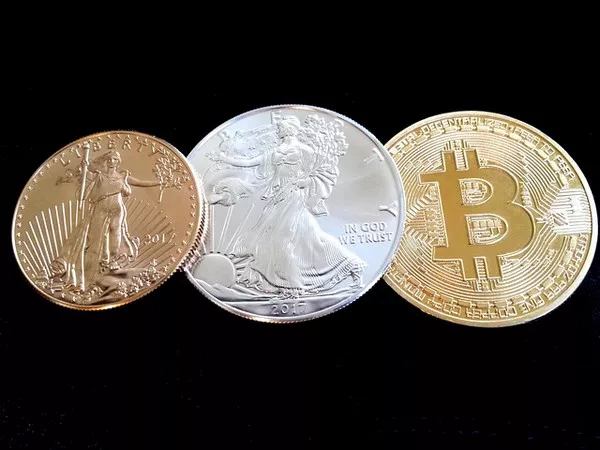Silver, a precious metal with a rich history dating back millennia, has captivated human societies for its beauty, rarity, and utility. From adornments to currency, silver holds a significant place in human culture and commerce. Understanding the natural occurrence of silver is crucial for mining operations, economic analysis, and environmental conservation efforts. In this article, we delve into the geological processes that create silver deposits and explore where silver is commonly found in nature.
Geological Formation of Silver Deposits:
Silver, like other metals, is typically found in ores, which are mineral deposits containing high concentrations of the metal. The formation of silver deposits is closely linked to various geological processes, including magmatic, hydrothermal, and sedimentary activities.
Magmatic Processes:
Silver can be formed in association with igneous rocks through magmatic processes. During the cooling and solidification of magma, certain minerals, such as sulfides, may precipitate out, containing silver along with other metals like copper, lead, and zinc. Intrusive igneous bodies, such as plutons and dikes, can host silver-bearing ores.
Hydrothermal Processes:
Hydrothermal fluids, enriched with various elements including silver, migrate through cracks and fractures in the Earth’s crust. As these fluids cool and interact with host rocks, they deposit minerals, including silver-bearing sulfides and sulfosalts, in veins and replacement deposits. Hydrothermal systems associated with volcanic activity, as well as those related to tectonic processes like faulting and folding, are common sites for silver mineralization.
Sedimentary Processes:
In certain geological settings, silver can accumulate in sedimentary environments through the weathering and erosion of pre-existing mineral deposits. Placer deposits, formed by the concentration of heavy minerals like silver in streambeds and alluvial fans, represent one type of sedimentary occurrence of silver. Additionally, silver can be transported and deposited as chemical sediments, such as silver chloride in arid environments.
Common Locations of Silver Deposits:
Silver deposits occur worldwide, with concentrations in specific geological settings. Understanding these locations is essential for prospecting and mining activities.
Mexico:
Mexico has a long history of silver mining and remains one of the world’s leading producers. The Mexican Silver Belt, stretching from central Mexico to the northwest, is renowned for its rich deposits. The region’s silver ores are primarily associated with hydrothermal veins hosted in volcanic and sedimentary rocks.
Peru:
Peru is another significant producer of silver, with deposits found in various geological provinces across the country. The Andean region, characterized by its tectonic complexity and volcanic activity, hosts numerous silver-bearing deposits. Hydrothermal veins, as well as polymetallic replacement deposits, are common in this region.
United States:
In the United States, silver deposits are distributed across several states, including Nevada, Colorado, and Idaho. These deposits are often associated with hydrothermal veins related to past volcanic activity. The famous Comstock Lode in Nevada, discovered in the mid-19th century, was one of the richest silver deposits in history.
Canada:
Canada boasts significant silver reserves, particularly in the provinces of Ontario, British Columbia, and Quebec. Silver deposits in Canada are primarily associated with volcanic and sedimentary rocks, with hydrothermal and epithermal veins being common occurrences.
Bolivia:
Bolivia, home to the renowned Cerro Rico silver mine, is a major silver-producing country in South America. The Cerro Rico deposit, located in the Potosí Department, is one of the world’s largest silver mines and has been in operation for centuries. Silver mineralization in Bolivia is primarily associated with hydrothermal veins and breccia pipes.
Australia:
Australia hosts silver deposits in various states, including New South Wales, Queensland, and Western Australia. These deposits are often found in association with volcanic and sedimentary rocks, with hydrothermal veins being the predominant mode of occurrence.
Other Regions:
Silver deposits can also be found in numerous other countries, including Russia, China, Argentina, and Chile. These deposits occur in diverse geological settings, reflecting the global distribution of silver-bearing minerals.
Environmental Considerations:
While silver mining plays a crucial role in meeting global demand, it is essential to address the environmental impacts associated with extraction and processing. Mining activities can result in habitat disruption, soil erosion, and water pollution, affecting local ecosystems and communities. Implementing sustainable mining practices, such as reclamation of disturbed lands, water management strategies, and minimizing the use of harmful chemicals, is essential for mitigating these impacts.
See Also If The Stock Market Crashes What Happens To Silver
Conclusion:
Silver, a precious metal prized for its beauty and versatility, is found in various geological settings around the world. From hydrothermal veins in volcanic regions to sedimentary placer deposits, silver occurs in diverse forms, driving exploration and mining activities across continents. Understanding the geological processes that create silver deposits and their distribution is crucial for resource assessment, economic development, and environmental stewardship. By employing responsible mining practices and embracing sustainable approaches, we can ensure the continued availability of silver while minimizing environmental harm.


